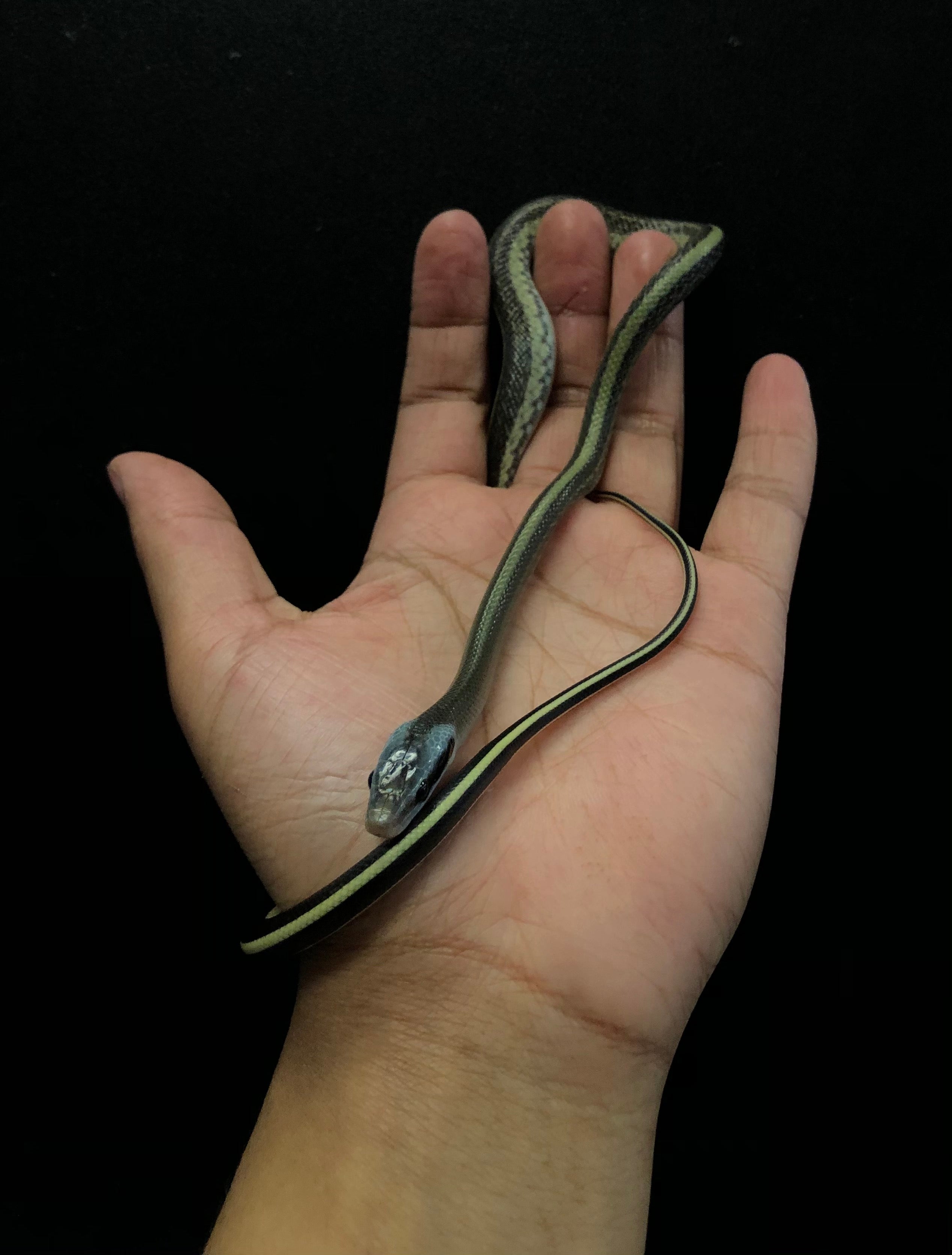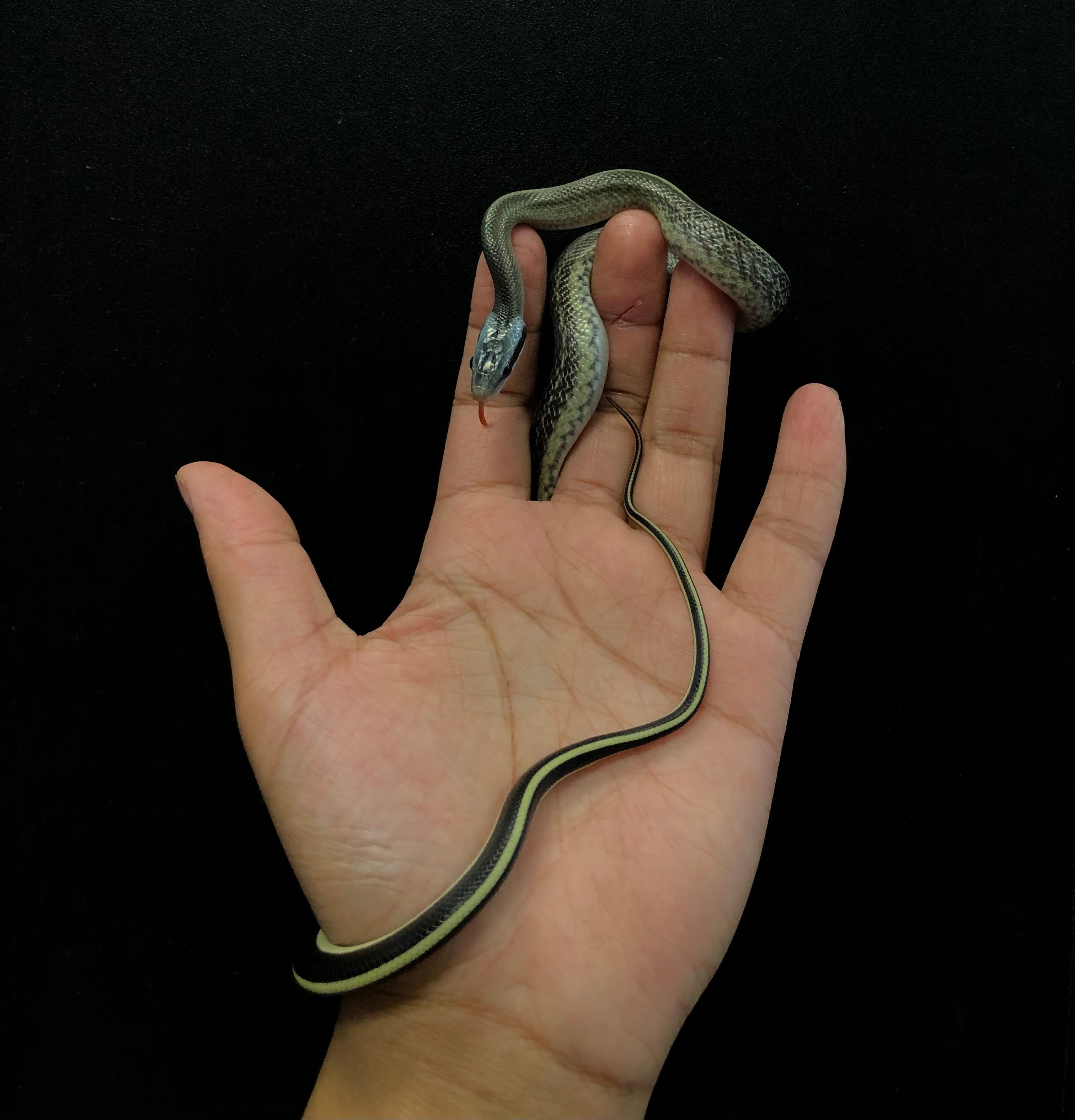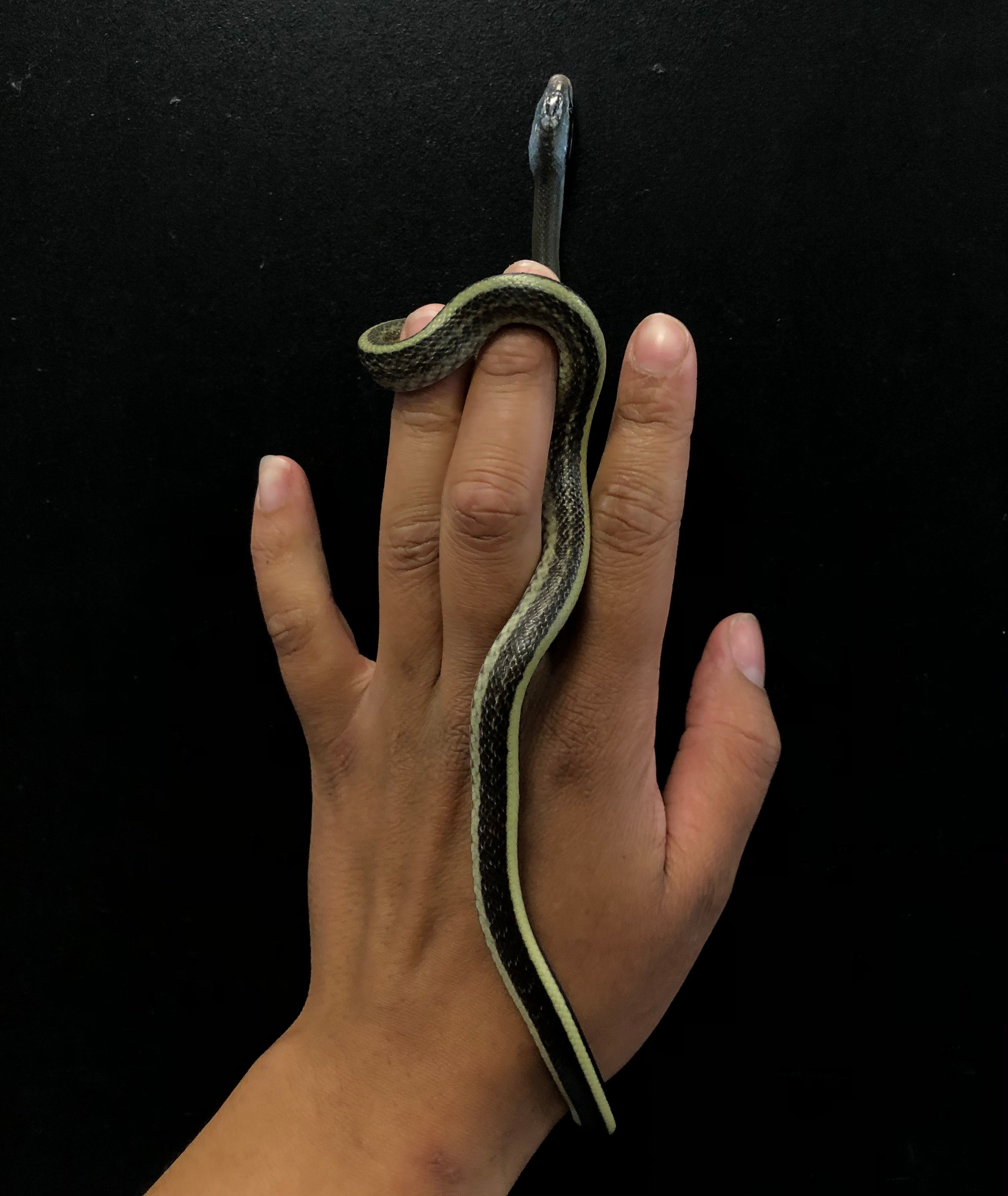Photo Disclaimer
Description
Cave Dwelling Ratsnake
Scientific Name: Elaphe taeniura ridleyi
Common Names: Cave Dwelling Ratsnake, Ridley’s Cave Racer, Cave Racer
Species Overview
Size: Adults typically reach 6–7 feet (1.8–2.1 m), though some individuals may exceed 8 feet. Despite their impressive length, they remain slender and highly agile climbers.
Appearance: The Cave Dwelling Ratsnake is among the most striking of the Elaphe taeniura subspecies, characterized by a bold contrast of black and cream bands along the body, a bright yellow to orange head, and a striking black facial mask. The tail is long and tapering, built for climbing and balancing on cave walls and vertical terrain. Their iridescent scales often catch light with a subtle sheen.
Distribution: Native to southern Thailand and Peninsular Malaysia, with populations also reported in parts of Myanmar.
Habitat: True to their name, these snakes inhabit limestone caves and nearby forested regions, often found clinging to rocky surfaces or resting in crevices. They are equally adept at navigating trees and vertical stone faces.
Behaviour: Largely nocturnal and semi-arboreal, Cave Dwelling Ratsnakes feed on birds, bats, and small mammals. They are alert, fast-moving snakes, relying on speed and agility over ambush. In nature, they are occasionally observed hunting near cave entrances where bats roost.
Captive Care
Enclosure: Adult Cave Dwelling Ratsnakes thrive in large, vertically oriented naturalistic enclosures—minimum dimensions of 48” × 24” × 24” (120 × 60 × 60 cm). A taller enclosure is preferred to allow climbing and exploration. Use a bioactive or natural substrate mix (soil, bark, leaf litter) with abundant branches, ledges, cork tubes, and artificial caves to replicate their natural habitat.
Temperature & Humidity: Maintain a temperature gradient of 78–82°F (25–28°C) with a basking spot around 86–88°F (30–31°C). Nighttime drops to 72°F (22°C) are beneficial. Humidity should range between 60–70%, with good ventilation and occasional misting to prevent stagnation.
Diet: Offer appropriately sized rodents or chicks every 10–14 days for adults and weekly for juveniles. Individuals readily take frozen-thawed prey. Feeding should reflect their lean body type—avoid overfeeding to maintain proper condition.
Behaviour in Captivity: Intelligent and alert, these snakes are best suited for intermediate to experienced keepers. While not typically aggressive, they can be defensive when startled and are very fast. With regular handling and consistent routine, many become calm and inquisitive. They are highly active and benefit from complex, enriched environments.
Special Considerations: This species requires a secure enclosure with plenty of climbing space. They do best with stable humidity and well-ventilated setups. Providing both shaded and elevated basking areas encourages natural movement and exploration.
Genetics Note
Wild Type: The natural form of Elaphe taeniura ridleyi displays sharp black-and-cream banding with a golden head and dark eye mask—an iconic look prized by keepers.
Known Variations: While not extensively line-bred for morphs, minor regional and selective color differences exist, such as lighter cream-banded or higher-contrast individuals. Related subspecies of E. taeniura (such as the Beauty Ratsnake or Taiwan Beauty Snake) have produced genetic morphs including Albino and Hypo, but these are rare or not yet established in ridleyi itself.



